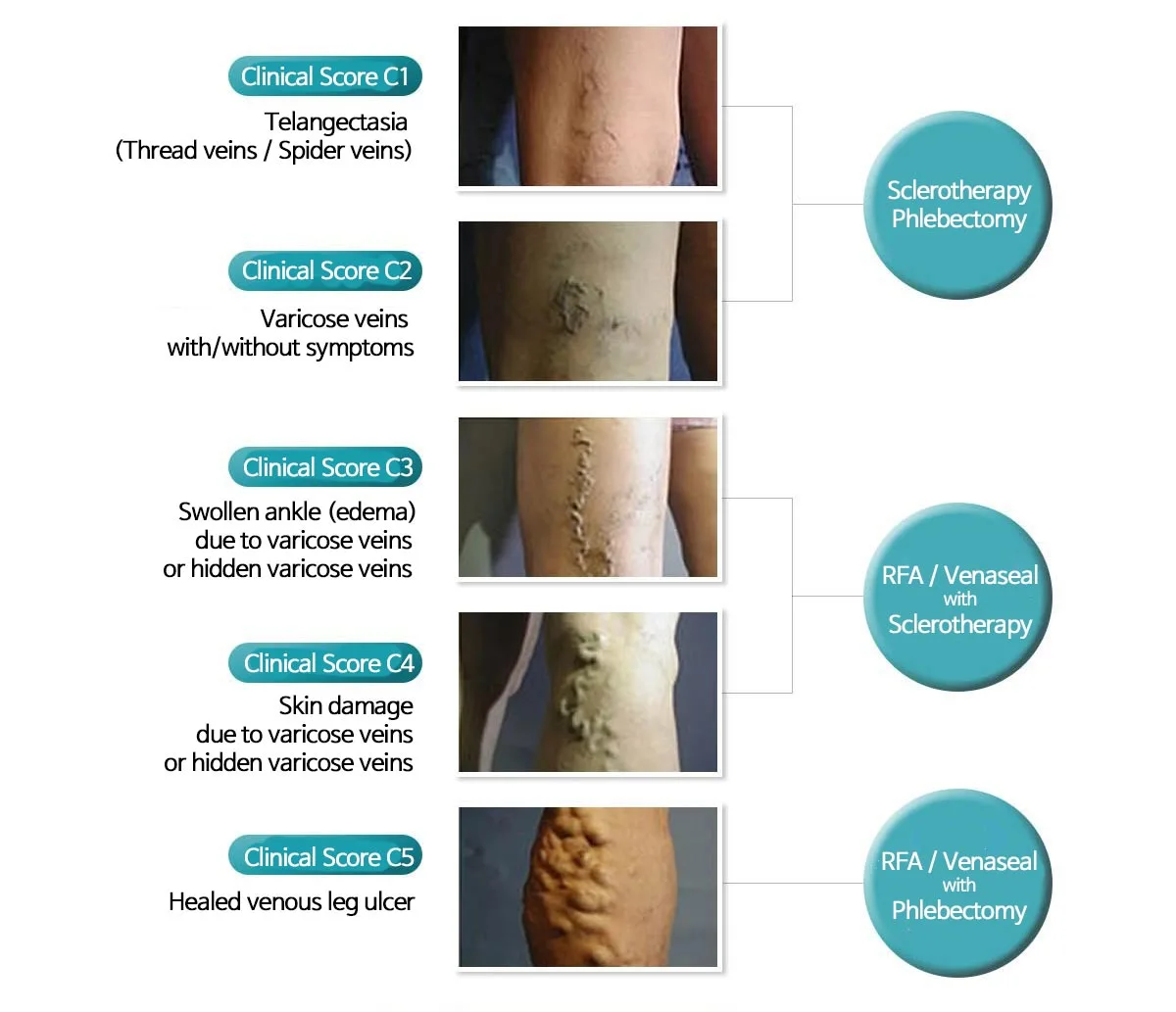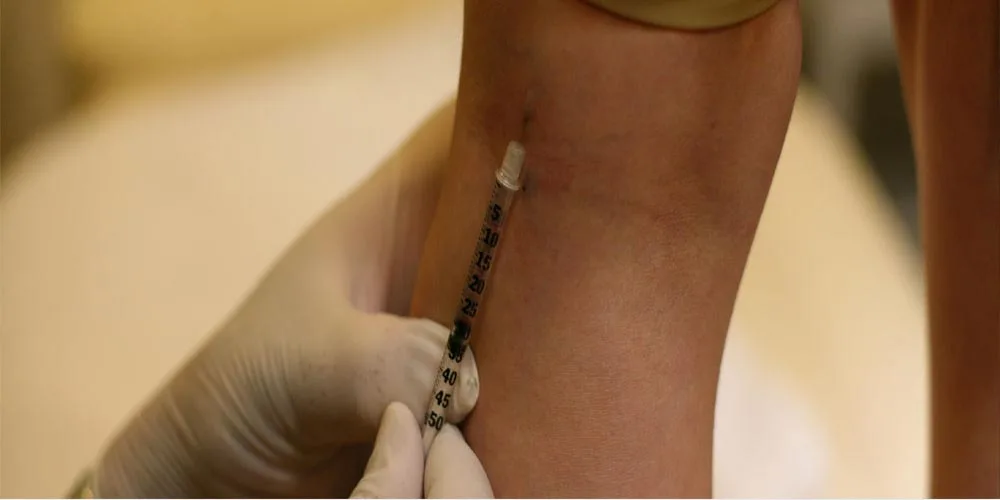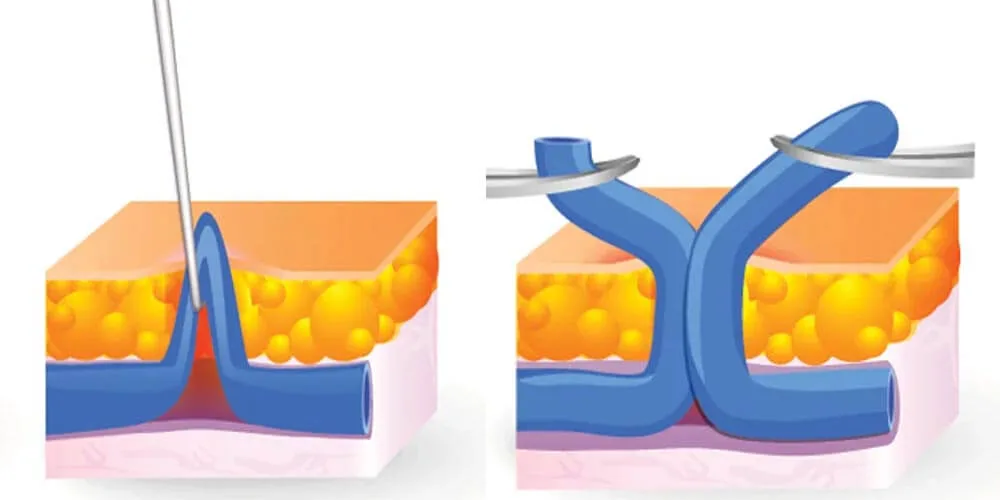COS’È LA VENA VARICOSA?
Vena varicosa
Le vene varicose sono vene ingrossate e contorte che si formano appena sotto la superficie della pelle, più comunemente nelle gambe e nelle caviglie.
Si sviluppano quando le valvole all’interno delle vene si indeboliscono o non funzionano correttamente, causando il ristagno del sangue piuttosto che rifluire in modo efficiente verso il cuore.
Man mano che la pressione aumenta, le vene diventano allungate, gonfie e visibilmente distorte.
Sebbene siano spesso considerate un problema estetico, le vene varicose a volte possono portare a disagio, gonfiore e, in alcuni casi, complicazioni circolatorie più gravi se non trattate.
Symptons of Varicose Vein
Le vene varicose sono spesso familiari e il rischio aumenta con l’età. Fattori come l’obesità, la gravidanza o i lavori che richiedono una posizione eretta prolungata possono esercitare ulteriore pressione sulle vene delle gambe, contribuendo al loro sviluppo.
Le vene varicose appaiono tipicamente come vene blu scuro, gonfie e contorte appena sotto la pelle. Mentre alcune persone non manifestano sintomi, altre possono notare un disagio da lieve a grave.
Sintomi lievi:
- Una sensazione di pesantezza, bruciore, dolore o affaticamento alle gambe, che può peggiorare dopo una posizione eretta o seduta prolungata.
- Gonfiore ai piedi e alle caviglie.
- Prurito intorno alle vene colpite.
Sintomi più gravi:
- Gonfiore persistente delle gambe.
- Dolore al polpaccio e aumento del gonfiore dopo lunghi periodi di seduta o in piedi.
- Cambiamenti della pelle, tra cui scolorimento, secchezza, assottigliamento o infiammazione.
- Desquamazione o formazione di piaghe aperte.
- Sanguinamento da ferite lievi dovute a pelle indebolita.
Le vene varicose sono comuni e, nella maggior parte dei casi, non rappresentano un serio problema medico. Tuttavia, la gestione precoce dei sintomi può aiutare a prevenire complicazioni e migliorare il comfort.
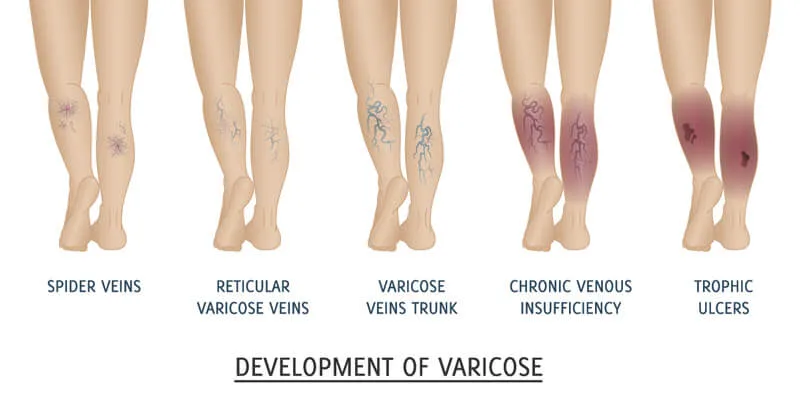
Diagnosis of Varicose Veins
Diagnosing varicose veins typically involves a physical examination and, if necessary, imaging tests to assess the condition of the veins and blood flow.
1. Physical Examination
A doctor will begin by visually inspecting the affected veins while you are standing or sitting. They may ask about symptoms such as leg pain, swelling, or discomfort, and review your medical history, including risk factors like family history, pregnancy, or lifestyle habits.
2. Doppler Ultrasound
If further evaluation is needed, a Doppler ultrasound is commonly used. This non-invasive test utilizes sound waves to visualize blood flow in the veins and detect valve dysfunction, blockages, or blood clots (deep vein thrombosis – DVT).
3. Venous Duplex Ultrasound
A more detailed version of Doppler ultrasound, this test provides both structural and functional assessments of the veins. It helps identify reflux (backward blood flow) and determine the severity of varicose veins.
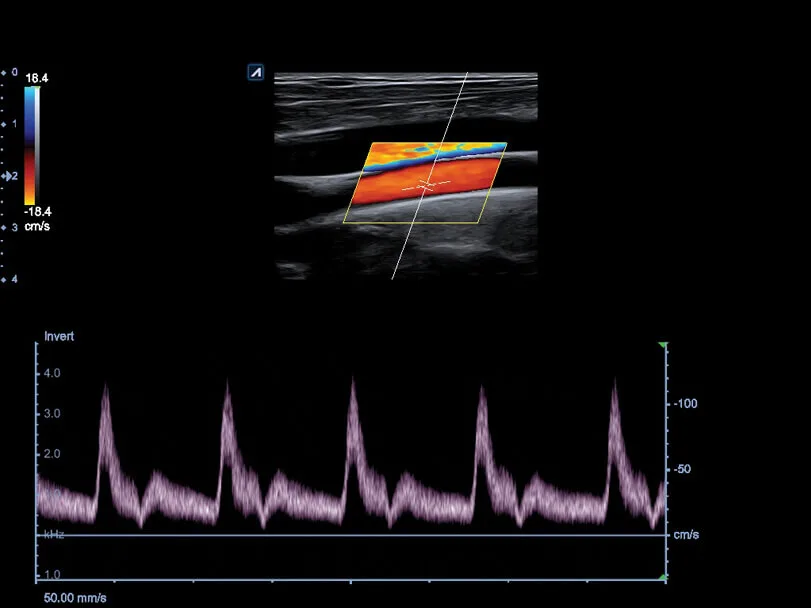
4. Additional Diagnostic Tests (If Necessary)
In rare cases, additional imaging tests such as venography (using contrast dye to highlight veins on X-rays) or MRI/CT scans may be used to evaluate more complex venous conditions.
When to Seek Medical Attention
Varicose veins are often harmless, but if you experience persistent pain, swelling, skin ulcers, or signs of deep vein thrombosis (DVT), seeking medical evaluation is crucial to prevent complications. Early diagnosis can help determine the best treatment options and prevent worsening symptoms.
Treatments for Varicose Veins
Le vene varicose sono una condizione progressiva, il che significa che tendono a peggiorare nel tempo se non trattate. Mentre i trattamenti medici possono gestire efficacemente i sintomi e migliorare l’aspetto, la prevenzione e i cambiamenti dello stile di vita sono gli aspetti più cruciali della gestione a lungo termine. Anche dopo il trattamento, i pazienti devono adottare abitudini sane per prevenire le recidive e mantenere una buona circolazione venosa.
1. Modifiche dello stile di vita: la chiave per la prevenzione e il successo a lungo termine
ince varicose veins develop due to poor circulation and increased pressure in leg veins, modifying daily habits is essential to both prevention and post-treatment care. Even if you undergo medical treatment, failing to change your lifestyle may lead to recurrence.
Essential Lifestyle Changes for Varicose Veins
-
Wear Compression Stockings
- Helps improve circulation by providing gentle pressure that supports vein function.
- Recommended for individuals who stand or sit for long hours.
-
Elevate Your Legs Regularly
- Raising your legs above heart level for 15–20 minutes several times a day reduces swelling and venous pressure.
- Especially important for those experiencing leg fatigue or swelling after long periods of standing.
-
Stay Active & Exercise Regularly
- Low-impact exercises like walking, swimming, and cycling strengthen calf muscles, which help pump blood back to the heart.
- Avoid sitting or standing for prolonged periods; incorporate movement into your daily routine.
-
Maintain a Healthy Weight
- Excess weight increases pressure on leg veins, worsening varicose veins and increasing the risk of recurrence.
- A balanced diet rich in fiber and antioxidants can support vascular health.
-
Avoid Prolonged Sitting or Standing
- If your job requires standing for long hours, shift weight between legs and take breaks to move.
- If sitting for extended periods, flex and extend your feet or stand up periodically to promote circulation.
-
Stay Hydrated & Eat a Vein-Friendly Diet
- Drinking plenty of water and consuming foods rich in flavonoids (citrus fruits, berries) can strengthen vein walls.
- Reduce salt intake to prevent fluid retention and leg swelling.
Prevention is key! Without lifestyle changes, even successfully treated varicose veins can return. Long-term commitment to these habits is essential for maintaining healthy legs.
2. Trattamenti medici per le vene varicose
Se le vene varicose causano disagio o problemi estetici, le procedure minimamente invasive possono trattare efficacemente la condizione. Queste procedure vengono in genere eseguite in regime ambulatoriale con tempi di recupero minimi.
Procedure non chirurgiche e minimamente invasive
- Scleroterapia: Una soluzione chimica viene iniettata in piccole vene varicose, causandone il collasso e lo sbiadimento nel tempo.
- Ablazione laser endovenosa (EVLA) e ablazione con radiofrequenza (RFA): L’energia termica viene erogata attraverso un catetere per chiudere le vene malate.
- Venaseal™ (trattamento adesivo medico): Un adesivo medico specializzato viene iniettato nella vena per sigillarla, eliminando la necessità di trattamenti a base di calore o calze compressive dopo la procedura.
Trattamenti chirurgici (per i casi più gravi)
Nei casi avanzati, la chirurgia può essere necessaria quando i trattamenti minimamente invasivi sono inefficaci.
- Flebectomia: Le piccole vene varicose vengono rimosse attraverso minuscole incisioni.
- Stripping e legatura delle vene: Le vene varicose più grandi vengono legate e rimosse chirurgicamente.
A causa dei progressi nei trattamenti meno invasivi come Venaseal™, EVLA e RFA, oggi la chirurgia tradizionale è raramente necessaria.
Sistema completo di classificazione dei disturbi venosi cronici (CEAP) e trattamenti

VARIABLE VARICOSE VEIN
Variable Treatments
VenaSeal
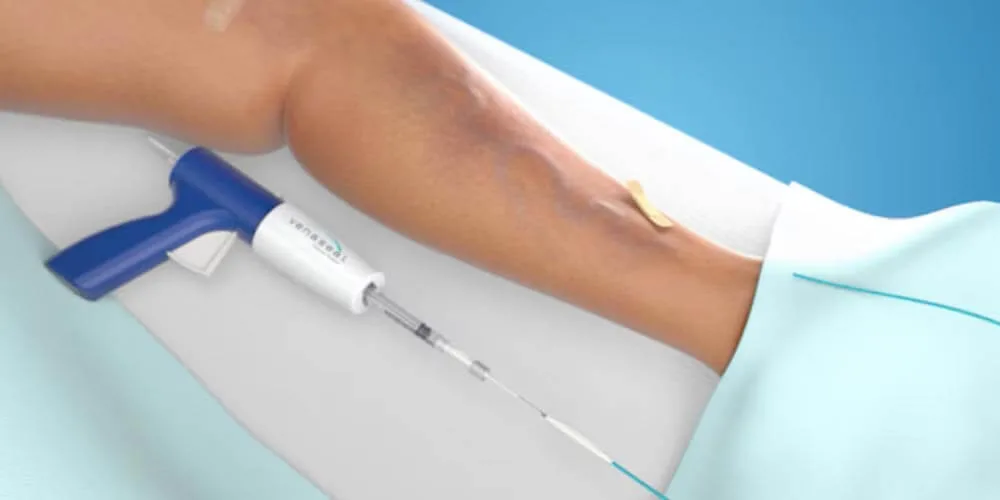
The Venaseal™ procedure utilizes a medical adhesive to effectively and permanently seal varicose veins without the need for heat-based energy.
- Minimally invasive with no need for tumescent anesthesia
- Suitable for various vein sizes, including the greater & lesser saphenous vein
- Immediate return to daily activities with minimal downtime
Before & After
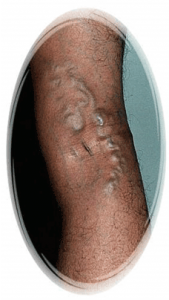
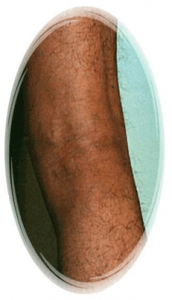
uomo di 36 anni, dopo flebectomia, 4 settimane dopo
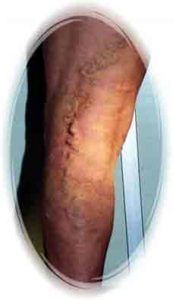
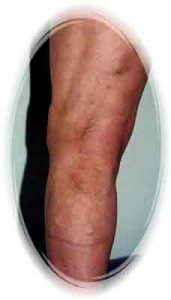
Donna di 62 anni, dopo EVLT, 11 settimane dopo


Uomo di 19 anni, Dopo flebectomia e scleroterapia, 6 settimane dopo
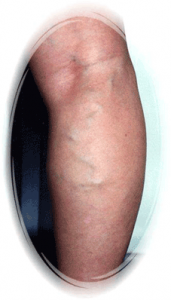

donna di 50 anni, dopo la scleroterapia, 8 settimane dopo
The Importance Of Compression Stocking

Compression Therapy for Varicose Veins and Lymphedema
Compression therapy involves the use of specialized compression stockings to effectively manage varicose veins and lymphedema, promoting better circulation and reducing swelling.
How Gradient Compression Works
Gradient elastic stockings, first developed in the early 1950s by an engineer and patient, remain the gold standard for managing chronic venous disease. These stockings apply graduated pressure, which is strongest at the ankle and gradually decreases up the leg. This controlled compression helps:
- Prevent excessive expansion of superficial veins.
- Reduce blood pooling and backward flow, minimizing congestion.
- Alleviate symptoms such as leg discomfort, swelling, and varicose veins.
The Importance of Prevention
When it comes to varicose veins, prevention and recurrence prevention are just as important as treatment. Even after medical intervention, consistent use of compression stockings can help maintain healthy circulation and reduce the risk of future vein problems.
Where to Buy
To ensure the best quality and effectiveness, we recommend purchasing compression stockings from Evita Clinic or trusted online retailers.
Why Prevention & Lifestyle Changes Matter
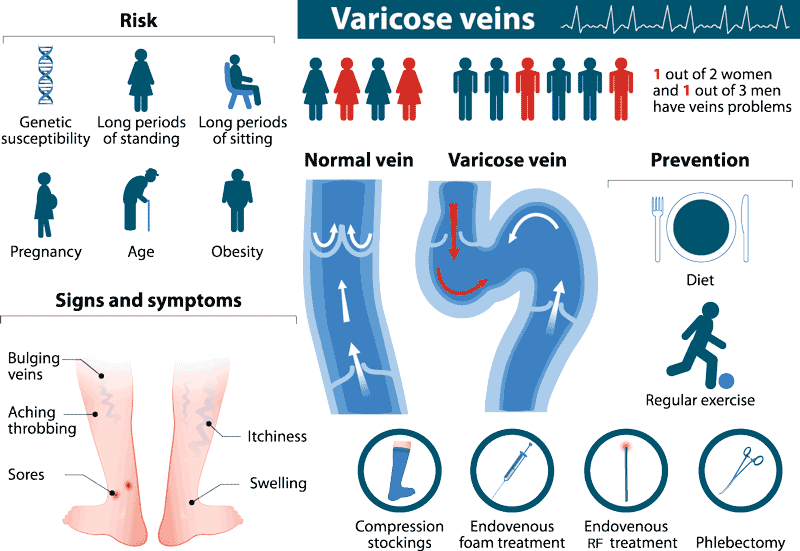
✅ Varicose veins are progressive – early prevention is crucial.
✅ Even after treatment, recurrence is possible without lifestyle modifications.
✅ Simple habits like leg elevation, compression stockings, and exercise can significantly reduce symptoms and prevent new varicose veins.
Taking control of your vein health through lifestyle changes and early intervention is the best way to ensure long-term success in managing varicose veins. Treatment can help, but your daily habits will determine the long-term outcome!



